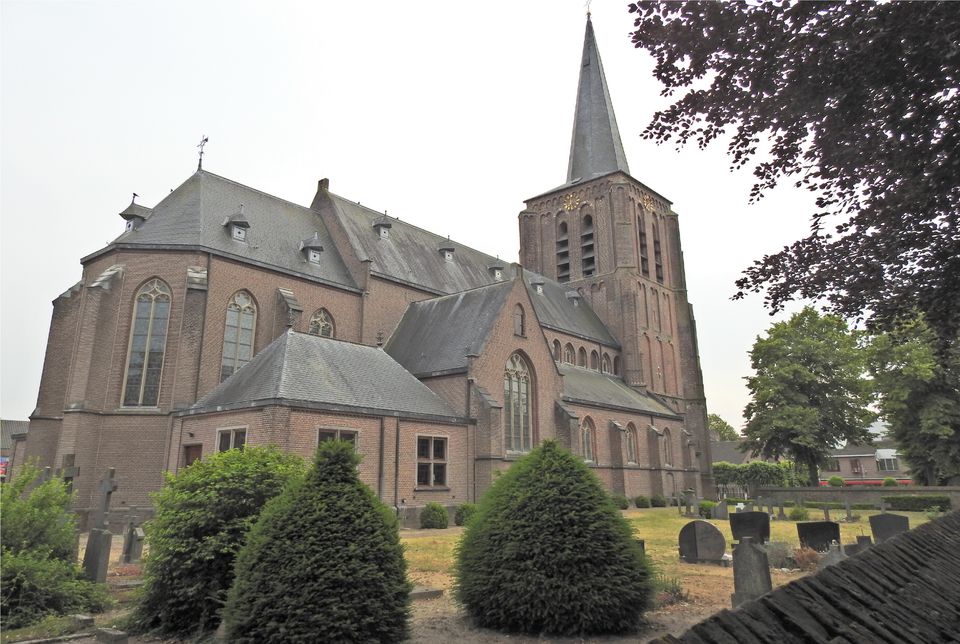Kerk Sint Willibrordus | Bakel
Contact
Sint Wilbertsplein 12
5761 BK Bakel Plan your route to Kerk Sint Willibrordus | Bakel
The St. Willibrordus Church of Bakel. There has been a church here since 721, the first stone church was built in the 11th or 12th century and parts of it are still visible in the nave.
Bakel is one of the oldest settlements in the Peel, the first reference dates back as far as 714. The churc…
The St. Willibrordus Church of Bakel. There has been a church here since 721, the first stone church was built in the 11th or 12th century and parts of it are still visible in the nave.
Bakel is one of the oldest settlements in the Peel, the first reference dates back as far as 714. The church played a major role in Bakel, as evidenced by the first reference to the church, from the early Middle Ages, in 721. Indeed, that is when the property passed to Bishop Willibrordus, who also became the patron saint. Before that, the church was dedicated to Peter, Paul and Lambert. Willibrordus was originally an English bishop who received large amounts of land from various Brabant nobles. Usually he had churches and monasteries built on these, in Bakel a rededication was sufficient. The first stone church was erected in the 11th or 12th century, parts of which are still visible in the nave. Bakel functioned as a mother church for its surroundings. That is, people from Gemert, Deurne and Milheeze came to Bakel to church and the eventual new parishes were founded from Bakel. Gemert was the first in 1438 (around that time the first real Gemert church was also built). Milheeze did not become its own parish until 1845, also with St. Willibrordus as patron saint for its church.
In addition to being the patron saint of these two churches, St. Willibrordus is also the patron saint of Holland, beer merchants and innkeepers. Interestingly, the patron saint of the Gemert church, St. John the Baptist, is also, among other things, the patron saint of liquor merchants.
The present church is a National Monument, whose tower dates from the sixteenth century. In the seventeenth century, the church became Protestant. Because of the end of the Eighty Years' War, the Catholic religion was banned, all churches were expropriated and cleared for Protestant use. In Bakel the number of Protestants did not run very fast so it must have been quiet in the St. Willibrordus Church during that time (1648 to 1818). At that time a so-called barn church was secretly established where the Catholic faith could be practiced. Only after the end of Napoleon (who left the Netherlands in 1813) did the church become Catholic again after a long period of bickering. Some of the church's furnishings come from the barn church, such as the oak pulpit, two oak confessionals and a painting of St. Dominic.
Partly neo-Gothic, an eminently Catholic style, the church has a nave (that is, the oblong seating area for churchgoers) that is higher than the side aisles and has windows. This feature is also called basilical, after the basilica of Roman times. These were large market buildings also characterized by such an architectural style. Therefore, the very first churches were often built purely in the style of a Roman market building. In 1708 a fire occurred that destroyed much of the village archives kept in the church tower. The damage was repaired, as it was in 1893 after another fire. In 1910, the church was expanded to include two aisles and a presbytery. The Catholic church then experienced a heyday that lasted until the 1950s.
Sources:
P.H. Nooijen, Tussen Peel en Aa, 1967
RCE, monument description
Van Zummeren, P., Volkswijsheid van dag tot dag: De eeuwigdurende Volkskalender, 2000, BZZTÔH Publishers, The Hague.

